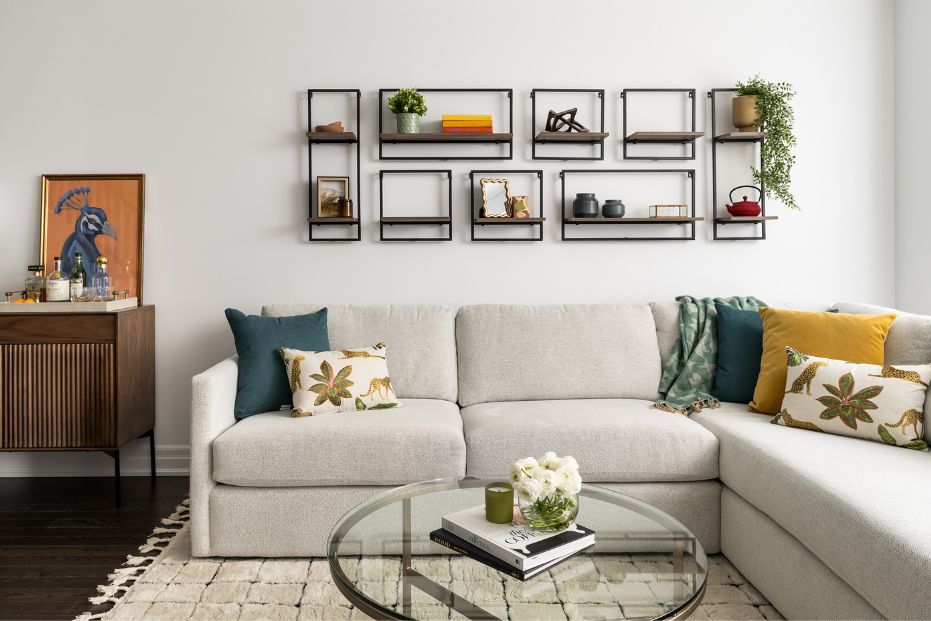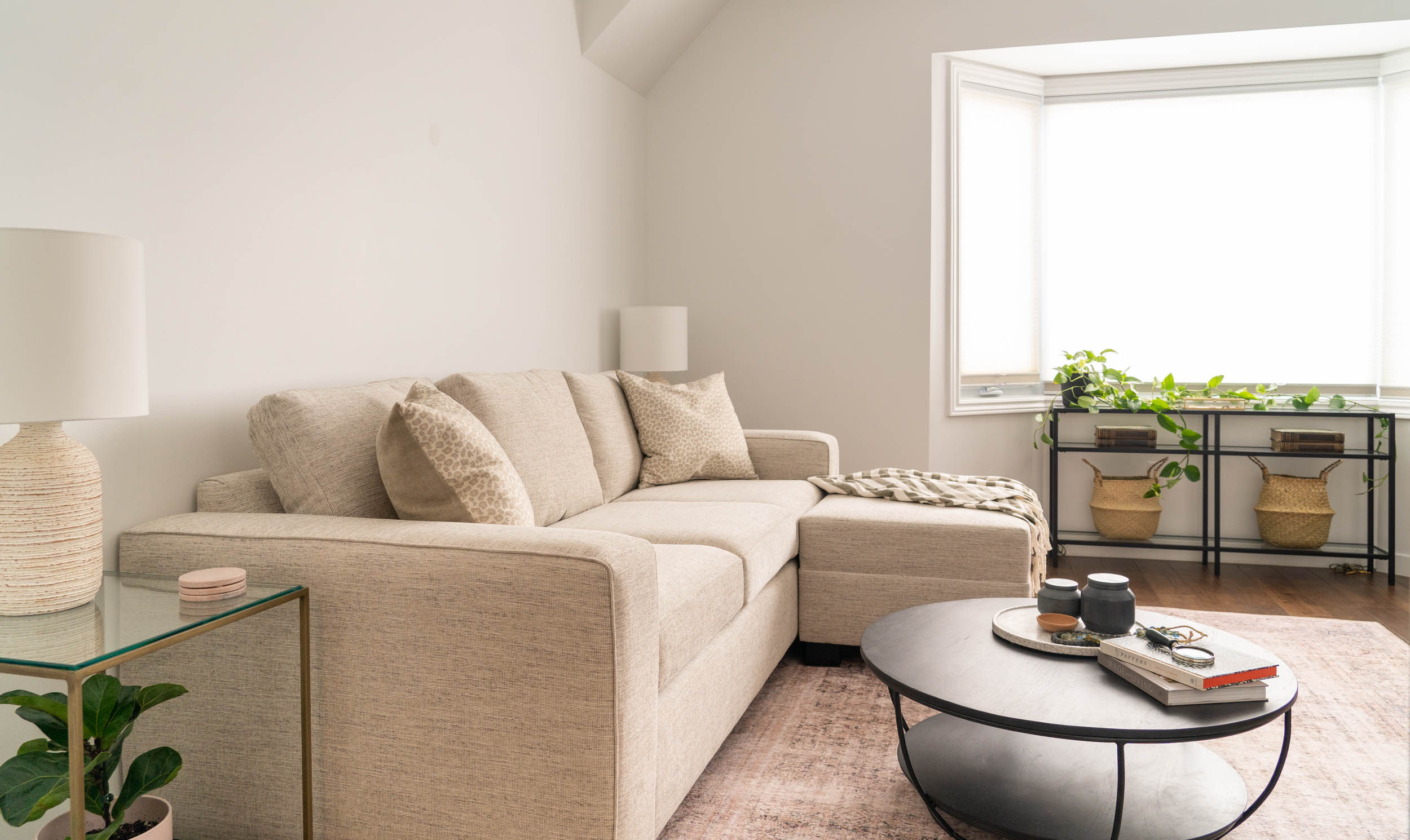AKA…why two sofas that look almost identical can be priced so differently

If you’ve been furniture shopping recently or are trying to determine a budget for an interior decorating project, you’ve likely discovered the vast range of price points for furnishings. For example, I just searched for a 98” sofa and found options for $1,000, $4,000, and $9,000. There really is an option for every price point, but what makes one sofa $1,000 and another $9,000?
There are a lot of things that can impact the price of a piece of furniture, but let’s simplify things for the sake of this conversation. In my experience, three significant factors contribute the most to the price of an item: where it’s made, what it’s made of, and how it’s made.
Where it’s Made – The Manufacturing Location
The manufacturing location of a piece of furniture is one of the biggest factors in how high (or low) the final price of a piece of furniture will be. Location will determine factors like as building and labour costs as well as the cost to ship the item to retailers. Furniture made in a country with a high cost of living and wages will likely cost more.
What it’s Made of – The Quality of the Materials
Is the piece made from MDF or wood? Plastic or metal? Polyester or wool? As you can imagine, the more expensive the materials used, the more expensive the furniture.
Curious to Know the Current Prices of New Furniture?
Download our Complimentary Furnishing Investment Guide to see average prices for three significant rooms in your home
How it’s Made – The Manufacturing Process
To keep this simple let’s look at the three most commonly found types of furniture to discuss how they’re made: stock, custom, and semi-custom.
Stock Furniture
Sometimes also referred to as “mass-produced” or “factory,” mass-produced furniture is entirely predetermined by the manufacturer, allowing it to be made in large quantities at a time.
These items are often manufactured on assembly lines and can (but not always) use a less skilled workforce. Because mass-produced items are produced in bulk and come in pre-determined materials and finishes, they are usually more readily available.
Custom Furniture
Custom furniture is the opposite of stock furniture. Custom pieces are made-to-order for each client, allowing them to specify almost every aspect, including the shape, size, colour, and material. Because the options are practically limitless, custom furniture is more labour-intensive and requires a highly skilled artisan. The more custom the piece, the more expensive it will be and likely the longer it will take to produce.
Semi-Custom Furniture
Semi-custom furniture lives in the middle of stock and custom. When an item is semi-custom it often means that the foundation of the piece can be mass-produced with aspects left unfinished and ready to be customized when purchased. This might be the stain or paint colour of a nightstand or the fabric on a sofa.
So, what’s the Difference between a $1,000 sofa, a $4,000 sofa, and a $9,000 sofa?
Let’s go back to those three 98” sofas, shall we?
The $1,000 sofa is a stock item that cannot be customized. It was made in china with a plywood frame. The cushions are polyurethane foam and the piece is upholstered in vinyl (faux leather) fabric, which cannot be changed. It arrives flat-packed and will require assembly. While this sofa may last longer, the frame alone has a one-year warranty.
The $4,000 sofa is a semi-custom item. The frame is pre-fabricated in north American hardwood overseas and then shipped in bulk to Canada. Once purchased, the frame is upholstered and finished with selected fabrics and trims. The cushions can also be customized for soft, medium or firm feel. This is a quality sofa is built to last, the frame has a 20-year warranty and the cushions have a five-year warranty.
The $9,000 sofa is entirely custom. The entire piece is handmade from start to finish in Toronto workroom using Canadian hardwoods and Canadian foam. The size and shape, fabric and wood finish can all be customized as well as the cushion fill and firmness. Like the semi-custom item this is a high-quality item with a lifetime warranty on the frame and a five-year warranty on the cushions.

While where it’s made, what its made of and how it’s made will play a big part in how much a piece of furniture will cost, there are always other factors that will contribute, like the brand name it’s sold under, the designer of the piece, the skill of the maker and even if the piece requires assembly.
If you’re hoping for some hard and fast rules I’m sad to say there are none (that I know of) – sometimes items made of MDF are more expensive than similar items made of hardwood, and a stock sofa can be more costly than a semi-custom sofa.
Not interested in figuring this out? You don’t need to when you work with Kathleen Casey Design. We create beautiful spaces, selecting the best pieces to suit your needs. We recommend which pieces to invest in and which you can save on – all within your desired investment rage.
